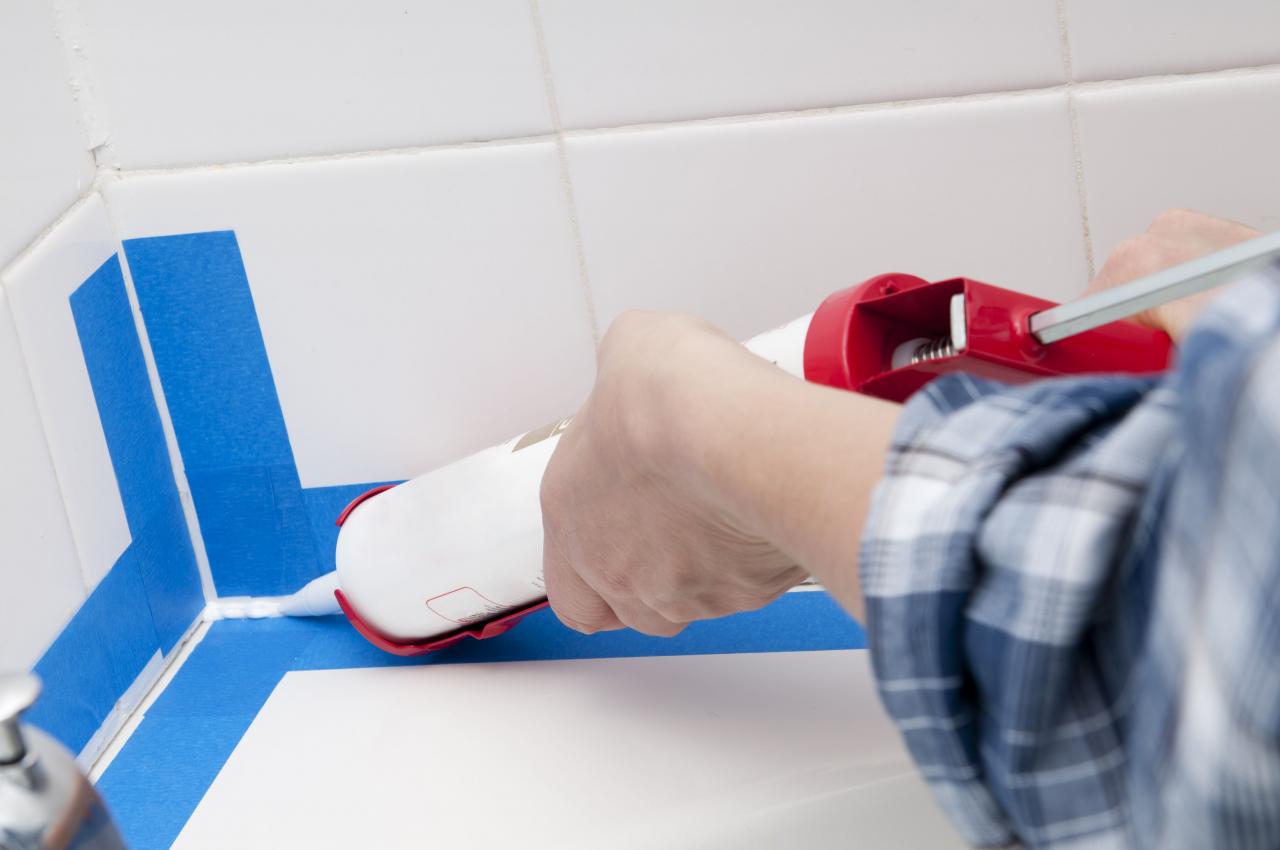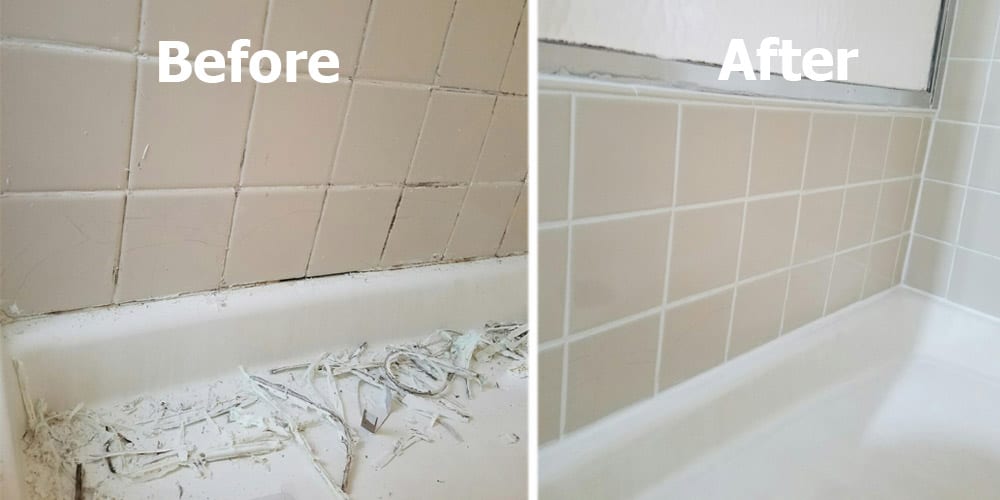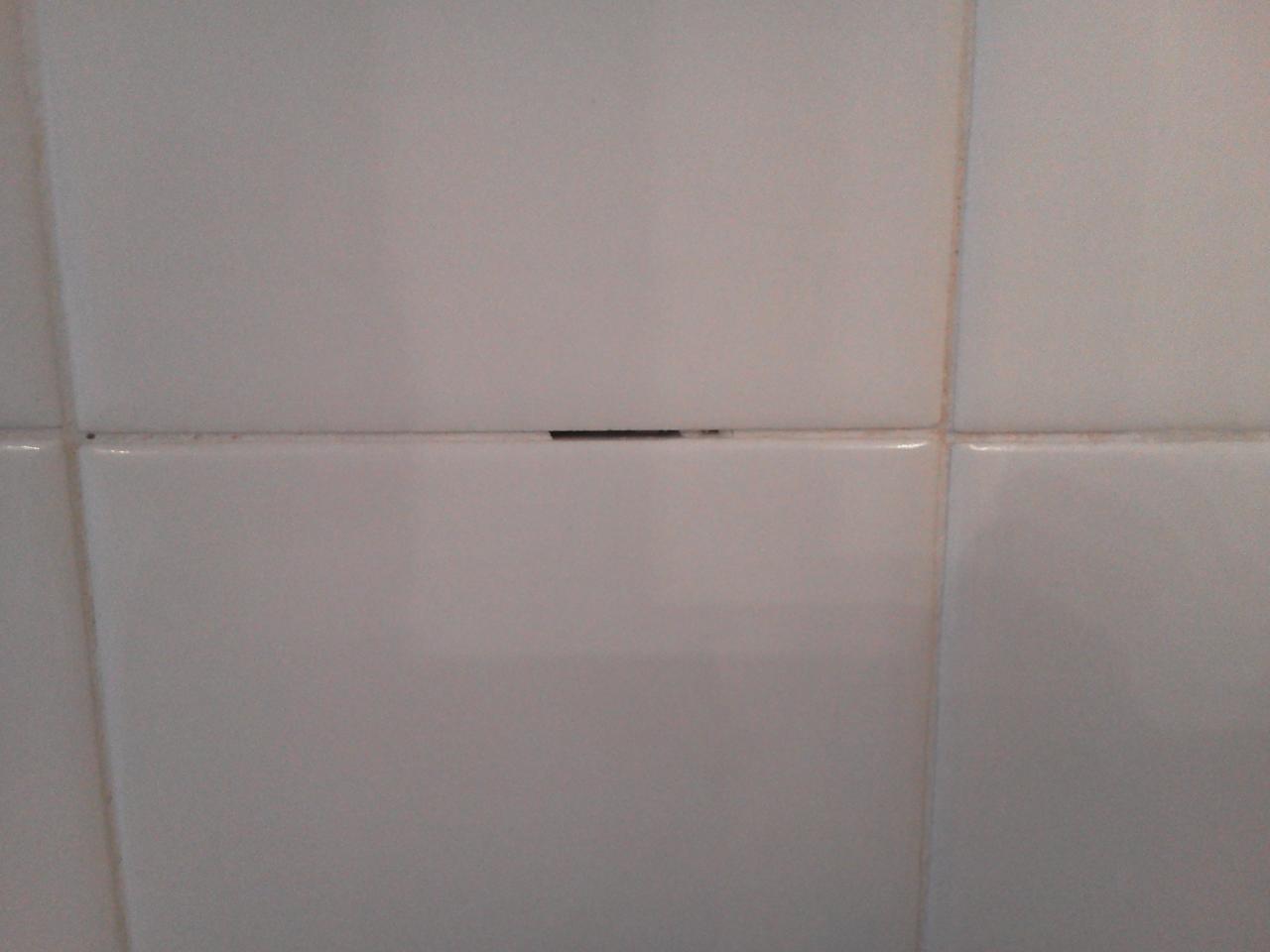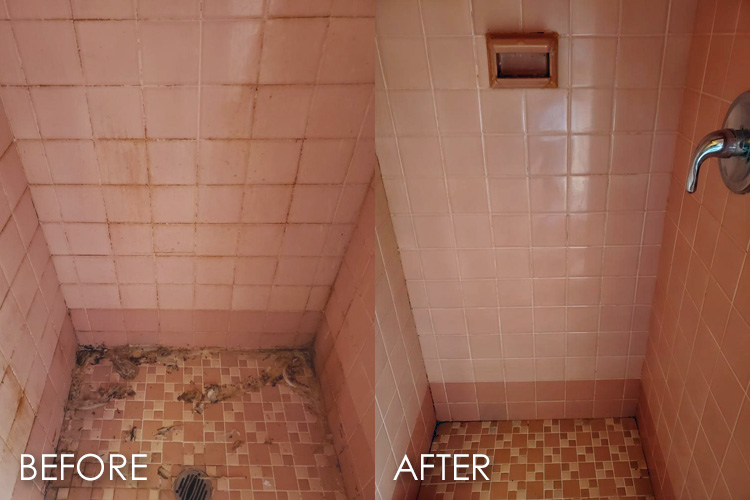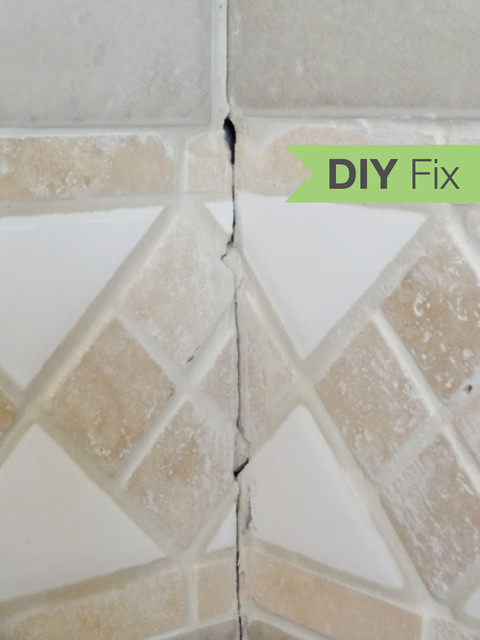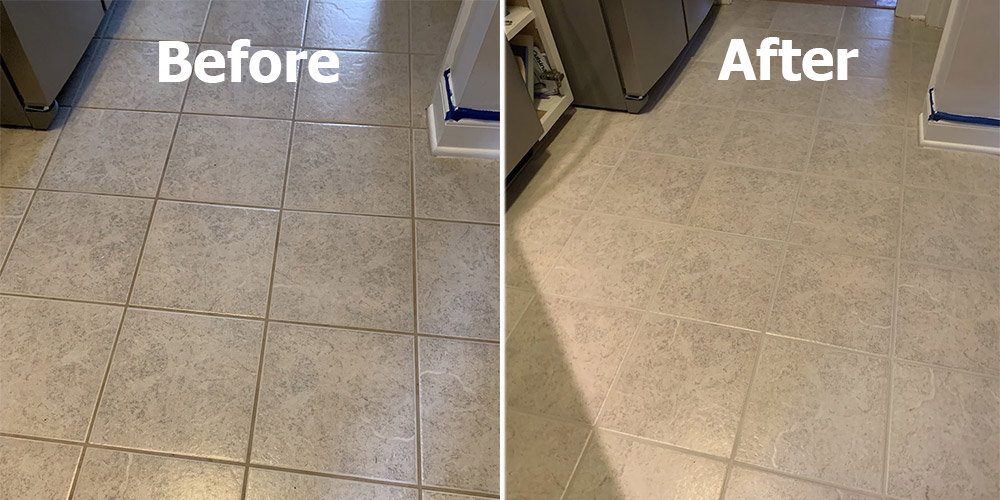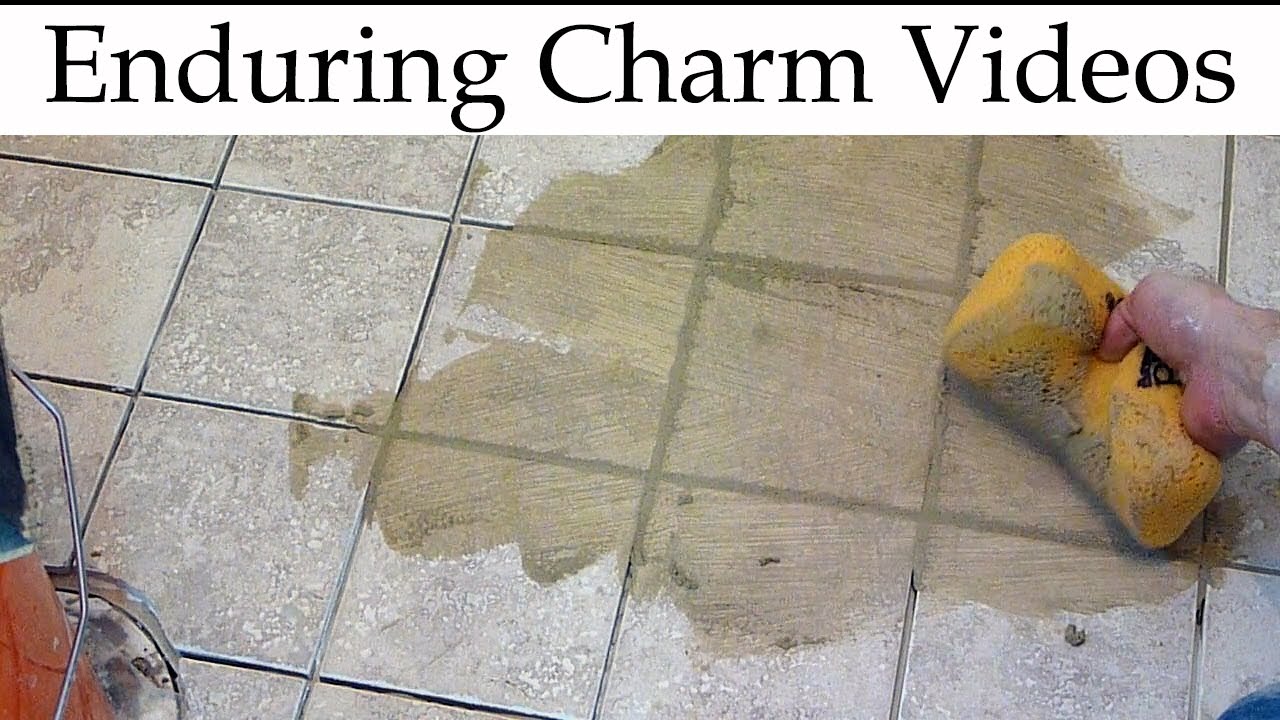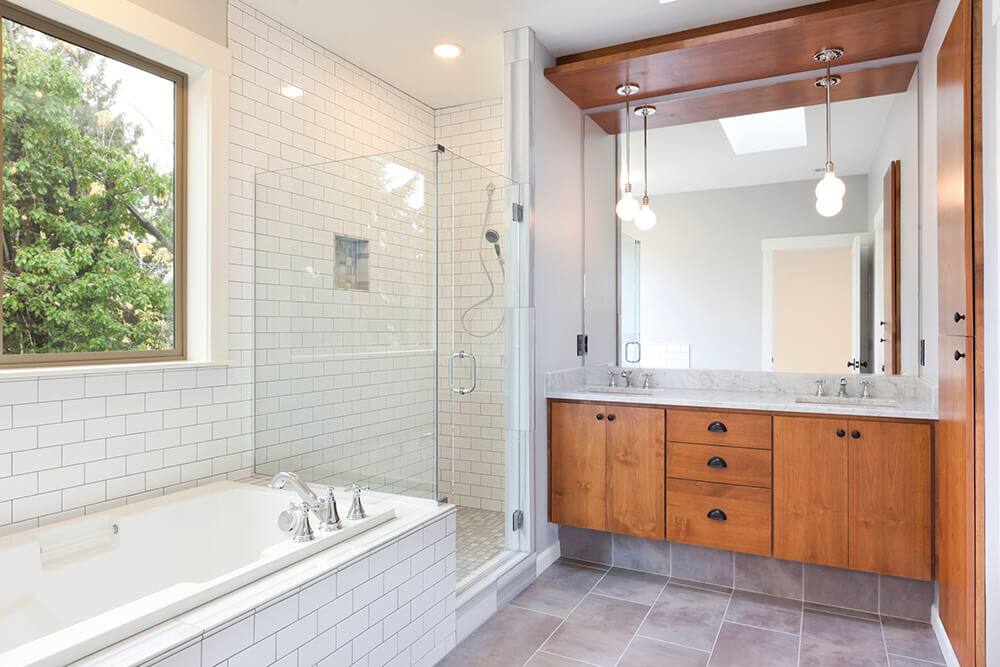Understanding the Importance of Grout Bathroom Tile Repairs
Today we will talk about grout bathroom tile repairs. You might be wondering, why should I bother with grout repairs? Well, my friend, the importance of maintaining and repairing grout in your bathroom tiles goes beyond just aesthetics. It plays a crucial role in keeping your bathroom clean, hygienic, and structurally sound. So, let’s explore why grout repairs are essential and how they can benefit you in the long run.
- Preserving the Integrity of Your Tiles: When it comes to bathroom tiles, grout acts as the unsung hero that holds everything together. Over time, grout can deteriorate due to moisture, cleaning products, and general wear and tear. Neglecting grout repairs can result in loose or cracked tiles, compromising the structural integrity of your bathroom. By addressing grout issues promptly, you can prevent further damage and ensure the longevity of your tiles.
- Preventing Water Damage and Mold Growth: Bathrooms are notorious for their high humidity levels, making them a breeding ground for mold and mildew. Damaged or missing grout lines can allow water to seep behind the tiles, leading to water damage and mold growth. Repairing grout not only prevents these issues but also helps maintain a healthy and hygienic bathroom environment for you and your loved ones.
- Enhancing the Aesthetics of Your Bathroom: Let’s be honest, a bathroom with cracked and discolored grout doesn’t exactly scream “relaxing oasis.” By repairing grout, you can instantly transform the look of your bathroom. Fresh, clean grout lines can make your tiles appear brighter, cleaner, and more visually appealing. So, if you’re looking to give your bathroom a facelift without breaking the bank, grout repairs are the way to go.
- Improving Cleanliness and Easy Maintenance: Dirty and stained grout lines can make the entire bathroom look dirty, no matter how often you clean. By repairing and maintaining grout, you’ll find it much easier to keep your bathroom sparkling clean. Smooth, sealed grout lines are less likely to trap dirt and grime, making cleaning a breeze. Plus, a clean bathroom is always a welcoming sight, right?
- Increasing the Value of Your Home: Whether you’re planning to sell your home or simply want to increase its value, paying attention to grout repairs is a smart move. Potential buyers are more likely to be impressed by a well-maintained bathroom with flawless grout lines. By investing a little time and effort into grout repairs, you can potentially boost the value of your property and make it more appealing to buyers.
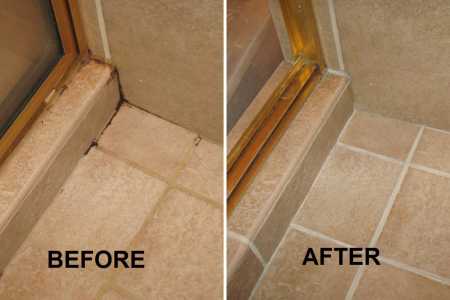
Common Issues with Grout in Bathroom Tiles
Now let’s talk about the common issues that can arise with grout in bathroom tiles. Grout, while essential for tile installation, is prone to various problems over time. From discoloration to cracking, these issues can not only affect the appearance of your bathroom but also compromise its cleanliness and structural integrity. So, let’s explore the most common grout problems and how you can address them effectively.
Discoloration and Staining: One of the most noticeable issues with grout is discoloration and staining. Over time, grout can become dirty, discolored, or even develop mold and mildew. This can be caused by the accumulation of dirt, soap scum, and moisture. Regular cleaning can help prevent discoloration, but sometimes it’s necessary to take additional steps, such as using grout sealers or applying specialized cleaning solutions, to restore the grout’s original color and prevent future staining.
Cracked and Damaged Grout: Cracked or damaged grout lines are not only unsightly but can also compromise the integrity of your bathroom tiles. This can occur due to various factors, including excessive weight or movement, improper installation, or shifts in the foundation. If left unattended, cracked grout can lead to loose or broken tiles, water damage, and mold growth. Repairing cracked grout involves removing the damaged portion and replacing it with new grout, ensuring a secure and durable tile surface.
Missing Grout and Tile Gaps: Another common issue is missing grout or gaps between tiles. These gaps can occur due to poor installation or natural expansion and contraction of the tiles over time. Not only do these gaps look unappealing, but they also create opportunities for water to seep behind the tiles, leading to water damage and mold growth. Addressing missing grout and tile gaps involves carefully applying new grout to fill in the spaces, ensuring a seamless and watertight finish.
Uneven or Deteriorating Grout Lines: Uneven or deteriorating grout lines can occur due to improper installation techniques or the use of low-quality grout. Over time, these issues can worsen, resulting in an uneven and unstable tile surface. To fix this, it may be necessary to remove the existing grout and replace it with a high-quality, durable grout. This ensures that your tiles are secure, level, and aesthetically pleasing.
Poorly Sealed Grout: Grout that hasn’t been adequately sealed is more susceptible to staining, mold growth, and water damage. It’s essential to regularly inspect and reseal your grout to maintain its integrity and prevent these issues. Applying a grout sealer creates a protective barrier, making it easier to clean and maintain your bathroom tiles while extending the lifespan of your grout.
Step-by-Step Guide to DIY Grout Repairs in the Bathroom
Below we provide you with a step-by-step guide on how to tackle grout repairs in your bathroom on your own. Whether you’re dealing with cracked grout, missing sections, or discoloration, with a little patience and the right tools, you can restore your bathroom tiles to their former glory. So, let’s get started with this DIY grout repair adventure!
Gather Your Supplies: Before you begin, gather the necessary supplies for your grout repair project. You’ll need items such as a grout saw or scraper, a grout mix or pre-mixed grout, a grout float, a sponge, and a bucket of water. You may also want to have a toothbrush or small brush handy for cleaning purposes. Ensure you have the right color of grout to match your existing tiles.
Prepare the Area: Start by preparing the area you’ll be working on. Clean the tiles and grout lines thoroughly, removing any dirt, debris, or loose grout. Use a grout saw or scraper to carefully remove any damaged or cracked grout. Make sure the area is dry before moving on to the next step.
Mix and Apply the Grout: Follow the instructions on your grout mix or pre-mixed grout packaging to prepare the grout mixture. Use a grout float to apply the grout into the spaces between the tiles, ensuring it fills the gaps evenly. Work in small sections at a time, and be careful not to leave any excess grout on the tile surfaces.
Smooth and Clean the Grout Lines: Once you’ve applied the grout, use the grout float to smooth and level the grout lines. Hold the float at a 45-degree angle and move it diagonally across the lines to ensure a uniform finish. Afterward, use a damp sponge to gently wipe away any excess grout from the tile surfaces, being careful not to disturb the newly applied grout lines.
Cure and Seal the Grout: Allow the grout to cure according to the manufacturer’s instructions. This typically takes 24-48 hours. Once the grout is fully cured, apply a grout sealer to protect it from staining and moisture. Follow the sealer instructions carefully, ensuring you cover all the grout lines. Allow the sealer to dry completely before using the bathroom.
Clean and Maintain Regularly: Congratulations! You’ve completed your grout repair project. To keep your bathroom tiles looking their best, make sure to clean and maintain the grout regularly. Use mild cleaners and avoid abrasive materials that could damage the grout. Regular cleaning and sealing will help extend the life of your grout and keep your bathroom in top shape.
When to Call in the Experts for Grout Repairs
While DIY grout repairs can be a cost-effective and rewarding option, there are instances when it’s best to call in the professionals. Whether you’re dealing with extensive grout damage, or intricate tile patterns, or simply prefer to leave it to the experts, professional grout repair services can provide you with peace of mind and exceptional results. Let’s find out when it’s advisable to seek professional solutions for your grout repairs.
Extensive Grout Damage: If you’re facing widespread grout damage throughout your bathroom, it may be time to consider professional assistance. Extensive damage, such as crumbling grout, large gaps, or multiple cracked tiles, can be challenging to repair on your own. Professionals have the experience and expertise to assess the situation accurately, identify underlying issues, and provide comprehensive solutions that ensure long-lasting results.
Intricate or Delicate Tile Patterns: Some bathrooms feature intricate or delicate tile patterns that require extra care and precision during grout repairs. If you have mosaic tiles, intricate designs, or delicate materials like natural stone, it’s wise to seek professional assistance. Professionals have the knowledge and tools to navigate complex patterns, ensure proper color matching, and handle fragile materials without causing damage.
Time Constraints and Convenience: Grout repairs can be time-consuming, especially if you have a busy schedule or limited availability. Hiring professionals saves you valuable time and ensures a hassle-free experience. They can efficiently complete the grout repairs, allowing you to focus on other priorities while enjoying the convenience of a professionally restored bathroom.
Expertise in Grout Restoration: Professional grout repair services specialize in restoring grout to its original condition. They possess in-depth knowledge of different grout types, appropriate cleaning methods, and effective repair techniques. Their expertise ensures that your grout is repaired correctly, minimizing the risk of future damage and maximizing the lifespan of your bathroom tiles.
Long-Term Value and Warranty: By opting for professional grout repair services, you can benefit from the long-term value they provide. Professionals use high-quality grout products, sealants, and techniques that ensure durability and longevity. Additionally, many reputable service providers offer warranties on their work, giving you peace of mind knowing that they stand behind the quality of their repairs.
Maintaining and Preventing Future Grout Damage in Your Bathroom
Now that you’ve repaired your grout, it’s time to focus on maintaining it and preventing future damage in your bathroom. Regular maintenance is key to preserving the integrity and appearance of your grout, ensuring that it remains clean, hygienic, and structurally sound. Here are some tips and strategies for maintaining and preventing future grout damage.
Regular Cleaning and Maintenance: To keep your grout in top shape, establish a regular cleaning routine. Use mild cleaners specifically designed for grout and avoid harsh chemicals that can damage or discolor it. Regularly sweep or vacuum your bathroom floor to prevent dirt and debris from settling into the grout lines. Additionally, wipe down the tiles and grout with a damp cloth or sponge after each use to remove any soap scum or spills.
Sealing Grout Periodically: Grout sealers act as a protective barrier, preventing stains, moisture, and mold growth. It’s important to periodically reseal your grout to maintain its integrity. Check the manufacturer’s instructions for the recommended frequency of resealing, as it can vary depending on the type of grout and sealer used. By sealing your grout regularly, you enhance its durability and make it easier to clean and maintain.
Avoiding Excessive Moisture: Excessive moisture is one of the leading causes of grout damage and mold growth. To prevent this, ensure proper ventilation in your bathroom by using exhaust fans or opening windows. Wipe down wet surfaces, such as shower walls and bathtub edges, after each use to minimize moisture accumulation. Additionally, use bath mats or rugs to absorb water and prevent it from seeping into the grout lines.
Addressing Leaks and Plumbing Issues: Leaking pipes or plumbing issues can lead to water damage and grout deterioration. If you notice any signs of water leakage, such as damp spots, water stains, or a musty smell, address the issue promptly. Contact a plumber to fix any leaks and ensure that your bathroom remains dry and free from water-related damage.
Using Grout-Friendly Cleaning Tools: When cleaning your bathroom tiles and grout, use grout-friendly cleaning tools and techniques. Avoid abrasive brushes or scrubbers that can scratch or damage the grout. Opt for soft-bristle brushes or toothbrushes to gently clean the grout lines. Additionally, avoid using excessive force when scrubbing, as it can dislodge or weaken the grout.
Is cracked grout a problem? – Is grout repair easy?
Quick Fix: Repair Cracked Bathroom Grout
How to Repair Tile Grout Lowes
Tile and Grout Repair Before & After The Grout Medic of Northern
Prevent Expensive Bathroom Repairs ProMaster (513) 724-0539
How to Fix Cracked Grout
Repair Cracked Grout
How to Repair Grout Thatu0027s Cracking (DIY) Family Handyman
Related Posts:
